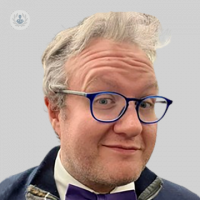Understanding paediatric migraines
Escrito por:
Paediatric migraines are common and can be debilitating, having a significant impact on a child's and young person's quality of life. They are more than just a headache and represent a tendency to experience headaches along with other sensory disturbances.
“Migraine is an inherited predisposition to experience headaches accompanied by sensory disturbances. It’s an instability in how the brain processes incoming sensory information, and this instability can be affected by physiological factors such as sleep, exercise, and hunger.” - Professor Goadsby, Professor of Neurology at King’s College London.
With proper diagnosis and treatment, most children can effectively manage their migraines and lead a normal life. Other patients can be refractory to standard treatments and may need bespoke therapies. Dr Micheál Taylor, renowned Consultant Paediatric Neurologist, provides a baseline understanding of paediatric migraines, looking at symptoms, and treatment options.

What is a paediatric migraine?
When migraines occur in children and adolescents, they are referred to as paediatric migraines. Paediatric migraines can occur at any age, even in infancy, but they are most commonly diagnosed in children between the ages of 7 and 15. It’s estimated that 10% of school-aged children and up to 28% of adolescents experience migraines.
Like adult migraines, there are numerous variants, including episodic migraine with/without aura, chronic migraine, hemiplegic migraine (familial and non-familial), retinal migraine, migraine with brainstem aura, and vestibular migraine.
It’s important to recognise that there are numerous other headache disorders that are differential diagnoses for migraines. It’s the role of an experienced clinician to recognise and treat these appropriately.
What are the symptoms of migraines in children?
The most common symptoms associated with paediatric migraines include:
- headache pain
- nausea and/or vomiting
- sensitivity to light (photophobia) and sensitivity to sound (phonophobia)
- visual disturbance (called visual auras)
- vertigo/dizziness
- fatigue
- weakness
- mood changes
- aggravation by physical activity
Paediatric migraines can last from 2 to 72 hours. Even though they can be shorter than adult migraines, the impact on the child and their family can still be significant. This can affect their ability to attend school, participate in activities, and enjoy a normal childhood.
What can trigger migraines in children?
Triggers can vary from child to child, but some common ones include stress, lack of sleep, dehydration, hormonal changes, certain foods, physical exertion, the menstrual cycle/period (in patients assigned female at birth), and environmental factors including bright lights, strong smells, and loud noises. Migraines often run in families, indicating a genetic predisposition.
How is a paediatric migraine diagnosed?
A detailed medical history is the most important aspect of diagnosing paediatric migraines.
A specialist, such as a paediatric neurologist, will inquire about the child's headache patterns, including the frequency, duration, location, and intensity of the pain. They will ask about related symptoms, birth and neonatal history, family history of migraines, and a wider holistic history reviewing the impact on the patient’s life.
A physical examination, including a neurological assessment, will be conducted. If there are any concerning features in the headache history (colloquially known as red flags), imaging tests such as an MRI may be ordered to rule out other serious conditions that could be causing the headaches.
How are migraines in children treated?
The key to migraine management is addressing many of the lifestyle factors.
For acute management, over-the-counter pain relievers such as Ibuprofen can be used to treat mild to moderate migraines. However, with recurrent and frequent use, they can lead to medication overuse (analgesic rebound) headaches.
Reliever medications such as triptans can be trialled; however, these can also predispose to medication overuse headaches.
For frequent migraines, preventive medications may be prescribed to reduce their frequency and severity. Typical examples include certain beta-blockers, anti-seizure medications and antidepressants, which are taken daily. If nausea and vomiting are severe, antiemetic medications may be prescribed to help manage these symptoms during a migraine attack. Some medications known as nutraceuticals are utilised by those treating children with migraines due to their reported efficacy and safety profiles.
Occasionally, some children may require other types of interventions, such as occipital nerve blocks.
Complementary to this, other therapies such as CBT (cognitive behavioural therapy) can help children manage the stress and anxiety that may accompany or increase migraine frequency. It can also teach them coping strategies to manage the pain and discomfort of migraines. Equally, stress-management techniques like deep breathing, relaxation exercises, or mindfulness can help minimise the impact of stress-related triggers.
For children who frequently experience migraines, it may be necessary to make accommodations at school. These can include allowing the child to rest in a quiet, dark room during an attack, providing extra time for assignments, or limiting screen time.
If you would like to book an appointment with Dr Micheál Taylor, head on over to his Top Doctors profile today.


